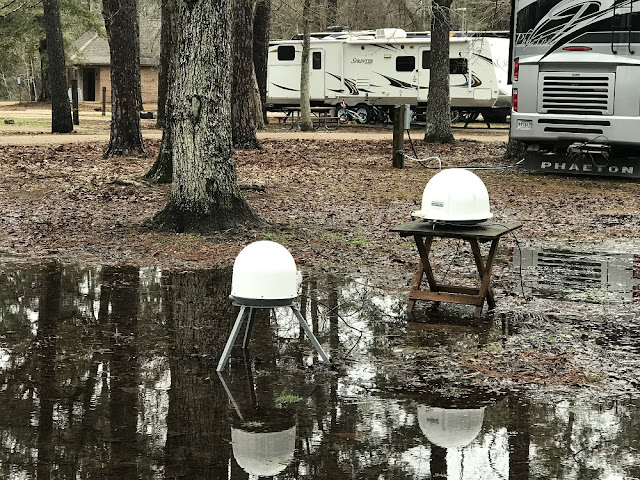We leave our little oasis among the
Palmettos and head down the road for a couple of hours to a small
town called Chauvin. There is nothing much in Chauvin, but we are
here to see the Chauvin Sculpture Gardens, a rather unique folk art
installation by an artist named Kenny Hill.
This place was amazing in a bizarre sort of way. You sort of have to wonder what was going thru his mind as he created his masterpieces. Luckily, after he disappeared, the Nicholls State University ad the Kohler Foundation in Wisconsin purchased the garden and preserved it for all to see.
A little bit about Kenny Hill and his Sculpture Garden:
Hill
is a mysterious figure with immense natural talent who showed up in
Chauvin in the late 1980s to find work on local construction sites.
There, a local landowner let him settle on a little plot of land
along the bayou where he first pitched a tent and then built a small
cabin from materials he found and salvaged from the local
countryside. That is when Kenny Hill’s story in Chauvin
begins.
Over the next decade, Hill fashioned his garden of angels and spiritual figures from concrete, mortar and paint that he found or local people donated. All the while, he remained a mystery to his neighbors. They knew little about him, and he never talked about himself or why he created his magical garden. Yet, long after he was gone, they described him as a “genius” but a loner and a quiet person who worked in his sculpture garden from sun up to sun down before and after a day on the job and on weekends. Then one day in January 2000, Kenny Hill walked away with nothing but the shirt on his back, never again to be seen in Chauvin. After the kindly man who owned the property where Hill lived died, the parish evicted him from his little plot. He sat in front of his house for a couple of days and then left as mysteriously as he arrived. Local folks, however, remain grateful for the spiritual but enigmatic gift he had given them.
Over the next decade, Hill fashioned his garden of angels and spiritual figures from concrete, mortar and paint that he found or local people donated. All the while, he remained a mystery to his neighbors. They knew little about him, and he never talked about himself or why he created his magical garden. Yet, long after he was gone, they described him as a “genius” but a loner and a quiet person who worked in his sculpture garden from sun up to sun down before and after a day on the job and on weekends. Then one day in January 2000, Kenny Hill walked away with nothing but the shirt on his back, never again to be seen in Chauvin. After the kindly man who owned the property where Hill lived died, the parish evicted him from his little plot. He sat in front of his house for a couple of days and then left as mysteriously as he arrived. Local folks, however, remain grateful for the spiritual but enigmatic gift he had given them.

















































